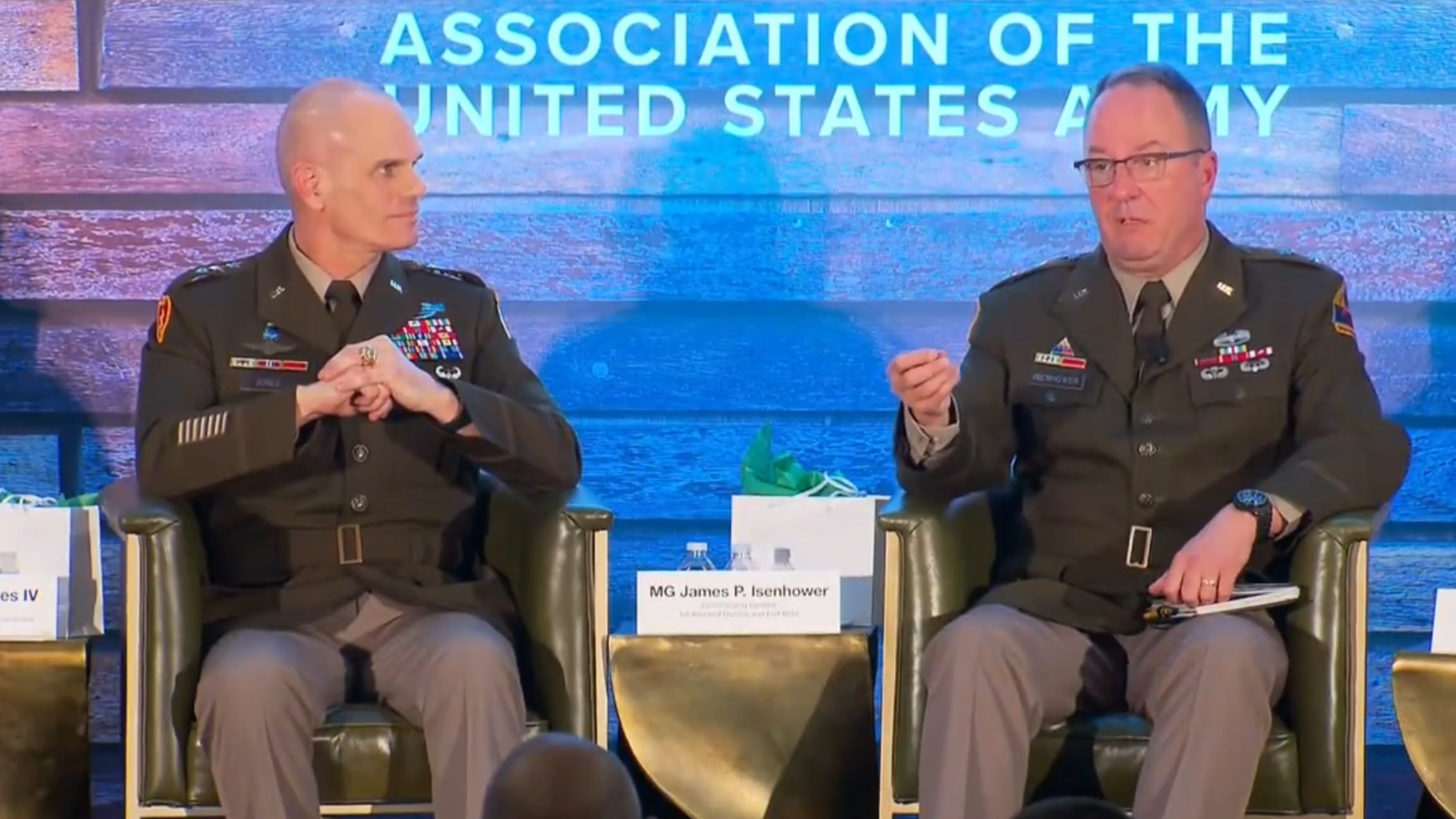

Mold in Army barracks has become an increasingly common problem at bases around the country. But the issue isn’t the mold, according to the commander of the 1st Armored Division, but rather discipline within the Army. Soldiers, Maj. Gen. James P. Isenhower III said, simply needed to be better about “adulting.”
And the general wants to be clear, he meant that negatively. Isenhower made the remarks on Wednesday, Oct. 11 at a panel at the Association of the United States Army conference. He and Lt. Gen. Omar J. Jones IV took questions from the crowd, including from one soldier who asked about military housing. “There are some areas that are still dilapidated,” the soldier asked. “How do we avoid being on the Army Times — mold, asbestos, and so forth.” Isenhower said the biggest way was addressing a “discipline problem” among soldiers.
“I do use this in a pejorative term, and it’s adulting,” he told the crowd at AUSA, video of which was first published to the r/Army subreddit. “But a lot of times we just need to teach young soldiers and young family members what is appropriate and what is part of their obligation and basic responsibility as an adult.”
Mold has been an increasing and major issue with enlisted soldiers, with serious cases of mold reported at multiple bases, including Fort Stewart, Fort Liberty, and others. Isenhower pointed to contributing factors such as climate and humidity at certain bases but continued with his comments on discipline.
Subscribe to Task & Purpose Today. Get the latest military news and culture in your inbox daily.
“I’ve got it good at Fort Hood compared to Fort Stewart or Fort Liberty where mold isn’t really a problem for us. I will tell senior leaders ‘I don’t have a mold problem, I have a discipline problem,’” Isenhower said. “Because just the lack of humidity we’re not under the same conditions. We have had some mold problems, but that’s from some leaky pipes we didn’t discover until it was too late, and there’s a quick way to fix it. It’s acute. But at the end of the day, we still had young men and women who called the hotline and say ‘I’ve got black mold in my shower and it’s on the grout,’ because they haven’t cleaned it.”
Isenhower currently is the commanding general of the 1st Armored Division, which is based at Fort Bliss in Texas and part of New Mexico. He’s been in that role since July 2022. He was previously stationed at Fort Cavazos (previously known as Fort Hood) from 2019-2020 as Deputy Division Commander for the 1st Cavalry Division. It’s not entirely clear which base he was referring to, Cavazos or Bliss, when he said he has a “discipline problem” with his soldiers.
The mold issue is one of several urgent concerns and problems facing service members in military housing. Last month the Government Accountability Office released a report outlining the scale of the issue. The report, “Poor Living Conditions Undermine Quality of Life and Readiness,” documented multiple instances of broken utilities such as air conditioning and fire alarms, plus black mold and even raw sewage inside the barracks. The GAO noted that the military does not “reliably assess conditions” in the barracks, which pose “serious health and safety risks.”

Lt. Gen. Jones also gave an answer to the question at AUSA, going before Isenhower. For his part, he said that Army leaders need to do more for enlisted soldiers on the matter and spoke of his own experience with poor housing. Isenhower went afterward, agreeing in part with Jones but then made his “adulting” comments. He finished his remarks by again saying soldiers can solve the matter themselves.
“[…] that’s how we stay out of the Army Times, if you want to put it that way,” he said. “In many cases, they’ve either misdiagnosed the problem or they could solve the problem themselves.”
Soldiers report and file maintenance requests for issues in the barracks, but the response to those requests can be slow or not enough to deal with massive mold growth. Service members have even started to try to deal with the issue on their own in unique ways. Recently soldiers at Fort Stewart created a mold-detecting device that monitors the conditions, such as humidity, that lead to black mold breaking out.
The Army is looking for billions of dollars to update and repair barracks; last month the deputy assistant secretary of the Army for installations, housing, and partnerships said that more than a fifth of the Army’s 6,7000 barracks were marked as “poor and failing condition.”
If you are a soldier dealing with or who recently dealt with mold in the barracks, we want to hear from you. What are your thoughts on Isenhower’s remarks? Reach out at nicholas@taskandpurpose.com
Update: 10/7/2024; This article was updated after publication to attribute the video clip of Maj. Gen. James P. Isenhower III to the Army subreddit.
The latest on Task & Purpose
- Opinion: In the name of health care freedom, millions of veterans may lose theirs
- Special Forces vs special operations forces — what’s the difference?
- Commandant wants all Marines to do a tour in the Indo-Pacific
- VA claims processors overwhelmed, quitting from high case load
- First photos of 101st Airborne soldiers testing the Army’s new rifles